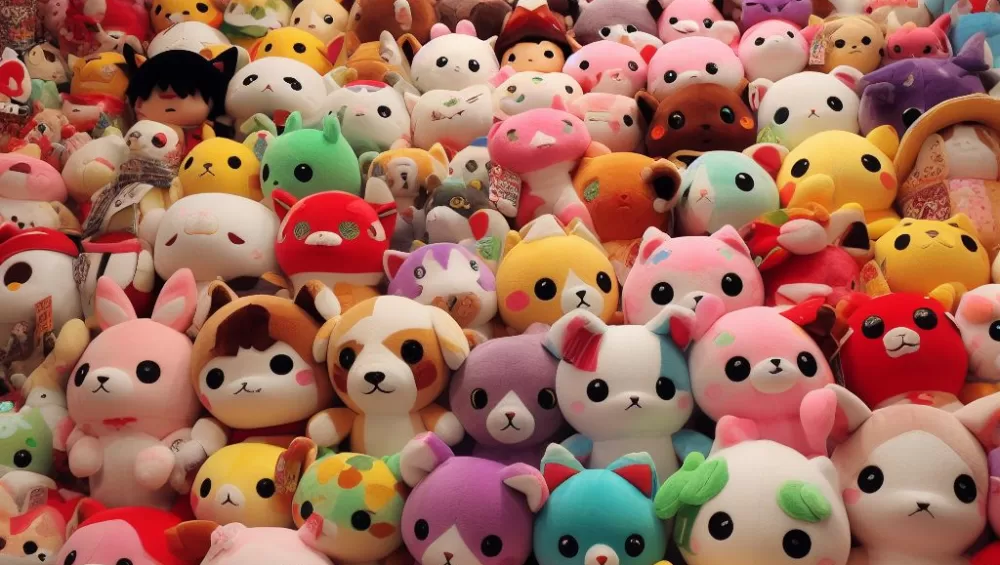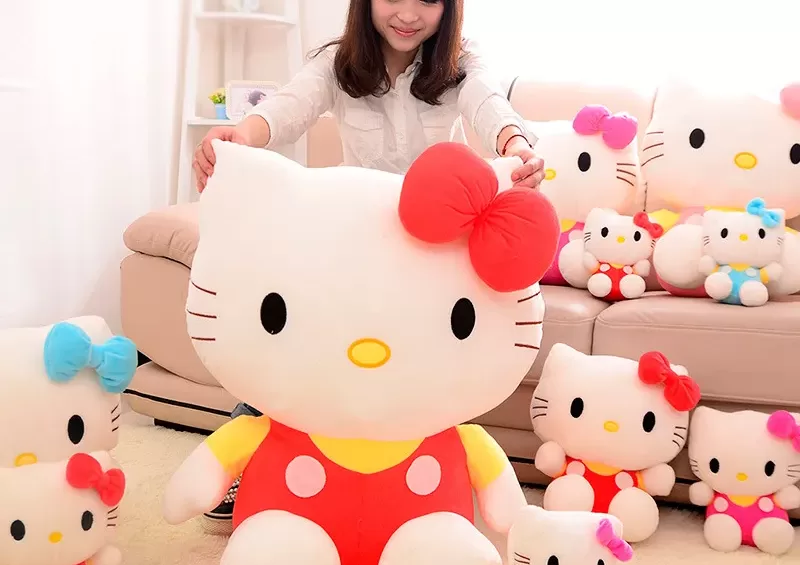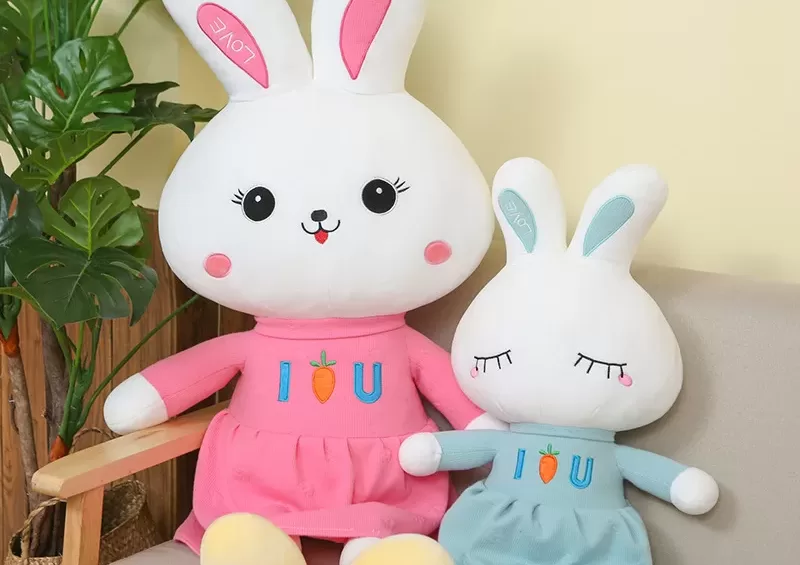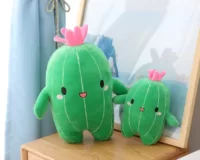In this section, we will take a trip down memory lane to explore the fascinating history of plush toys, also known as plushies. From their humble beginnings to their enduring popularity today, we will delve into the development and evolution of these beloved companions.
Plush toys have been around for centuries, with evidence of stuffed animals dating back to ancient civilizations. However, it wasn’t until the 19th century that plushies as we know them began to emerge. The first plush toy is believed to have been created in Germany in 1880 and was a stuffed bear with jointed arms and legs.
From there, plush toys spread rapidly in popularity, with the iconic teddy bear making its debut in 1902. Plushies continued to evolve and gain popularity throughout the 20th century, with the introduction of new manufacturing techniques and advancements in materials.
Today, plush toys are enjoyed by people of all ages and have taken on various forms, from interactive stuffed animals to licensed characters from popular movies and TV shows. Despite the ever-changing toy market, plushies remain a beloved and comforting presence in the lives of many.
Stay tuned as we explore the rich history of plush toys in more detail, including their origins, rise to popularity, and enduring appeal.
Origins of Plush Toys
Plush toys have a fascinating history that dates back over a century. The origins of plushies can be traced back to the 19th century, when Germany was the leading producer of stuffed toys. During this time, the Steiff company began manufacturing plush toys using mohair fabric, a soft and durable material that became the standard for plush toy production.
The first plush toy was created in 1880 by Margarete Steiff, who designed a felt elephant pin cushion that she sold to her friends. The design was so popular that she began producing more and expanded her business into stuffed toys. Her company became known for creating high-quality stuffed animals with intricate designs and lifelike features.
However, the use of plush fabric for stuffed toys was not a new concept. In the 1830s, a fabric called plush was developed, which was made of silk or a silk-like material with a deep, soft pile. This fabric was used for upholstery and clothing, and soon the material was adapted to create stuffed animals.
The Influence of French Teddy Bears
In the early 1900s, French toymakers began producing stuffed bears with moveable joints, inspired by a cartoon of President Theodore Roosevelt hunting bears. These bears quickly became popular, and American toymakers soon followed suit, creating their own versions of the bear.
The first American teddy bear was produced in 1902 by Morris Michtom, who was inspired by the French bears. Michtom’s bear, named after President Roosevelt, became an instant success, and soon teddy bears were being produced by toy companies around the world.
As the popularity of teddy bears grew, so did the demand for other plush toys. Companies started creating a variety of stuffed animals, from cats and dogs to farm animals and exotic creatures. Today, plush toys are a staple of childhood and continue to bring joy to people of all ages.
The Rise of Teddy Bears
The history of plush toys is incomplete without mentioning the iconic teddy bear. In 1902, the famous American president Theodore Roosevelt went on a hunting trip. While on the trip, he refused to shoot a small bear cub that his aides had captured. This incident was later depicted in a political cartoon, which inspired a New York store owner, Morris Michtom, to create a stuffed animal in the shape of a bear that he called “Teddy’s bear.”
The initial batch of Teddy bears was handmade, and Michtom soon found himself inundated with orders. Seeing the potential of the bear, he founded the Ideal Novelty and Toy Company, which became one of the biggest toy companies in the world. Teddy bears quickly became a sensation and a popular fixture in nurseries and children’s playrooms across the United States and beyond.
The Popularity of Teddy Bears Spreads
Before long, teddy bears were being mass-produced and exported worldwide. In the UK and Europe, teddy bears rose to prominence in the early 20th century and were quickly assimilated into popular culture. During World War I, teddy bears became a symbol of comfort and hope, with soldiers often carrying small teddy bears with them into the trenches.
From the 1920s onwards, teddy bears became increasingly diverse, with new designs, materials, and colours appearing on the market. Today, teddy bears remain a staple of childhood and continue to be produced in countless variations. They have transcended their beginnings as mere toys and have become iconic symbols of childhood, innocence, and comfort.
The Golden Age of Plush Toys
During the mid-twentieth century, plushies experienced a surge in popularity. The teddy bear, which was first introduced in the early 1900s, became a staple of childhood and one of the most beloved plush toys. However, teddy bears were no longer the only option available for children and collectors.
Manufacturers began producing a wider range of plushies, including animals, characters from popular media, and even objects such as food items. The use of bright colors and varying textures added to the appeal of these new plush toys, making them more attractive to children.
| Plush Toy | Year Introduced | Manufacturer |
|---|---|---|
| Raggedy Ann and Andy | 1918 | Johnny Gruelle |
| Mickey Mouse | 1930 | Steiff |
| Bugs Bunny | 1940 | Warner Bros. |
| Mr. Potato Head | 1952 | Hasbro |
The demand for plush toys also increased during this period. Plushies were seen as collectible items, and some individuals began amassing large collections. Manufacturers began producing limited edition plush toys, often in collaboration with popular media franchises, to appeal to these collectors.
The Future of Plush Toys
Today, plush toys continue to be a beloved companion for children and adults alike. Their enduring popularity can be attributed to the emotional connection that individuals form with them, as well as the comfort and joy that they provide. As the market for plushies continues to evolve and expand, it will be exciting to see what the future holds for these cuddly companions.
Technological Advancements in Plush Toy Manufacturing
The production of plushies has evolved significantly over the years, and technology has played a pivotal role in this transformation. With the development of innovative manufacturing techniques, the plush toy industry has witnessed exponential growth and continues to thrive to date.
Automation in Manufacturing
One of the most significant advancements in plush toy manufacturing is the introduction of automated machinery. Automated processes have enabled efficient and cost-effective production, and turned plush toy manufacturing into a large-scale industry. With the use of automated machinery, manufacturers can create detailed and intricate designs that were once difficult to replicate by hand.
Improved Materials
As technology has advanced, so have the materials used in plush toy manufacturing. Today, manufacturers utilize high-quality, soft materials, such as polyester fibers and microfibers, to create plushies that are more durable and comfortable to the touch. This has also enabled plush toys to be more hygienic and hypoallergenic, catering to an increasingly health-conscious consumer base.
3D Printing and Design Software
3D printing and design software have also revolutionized plush toy manufacturing, making it possible to create prototypes and designs quickly and efficiently. This has led to more unique and intricate designs that were once difficult to create with traditional manufacturing techniques. 3D printing technology has also enabled plush toy manufacturers to experiment with new materials and develop more sustainable manufacturing practices.
Sustainability and Ethical Production
With increasing awareness of environmental sustainability and worker’s rights, there has been a growing demand for plush toys that are manufactured in an ethical and sustainable manner. Many plush toy manufacturers have responded to this demand by adopting more sustainable production methods and using recyclable materials. Additionally, some companies have started to adopt fair trade policies to ensure that workers receive fair wages and working conditions.
Cutting-Edge Features
Recent technological advancements have also led to the incorporation of cutting-edge features in plush toy designs. For instance, some plushies can now be connected to smartphones and other devices, allowing for interactive play experiences. Additionally, some plush toys feature lights and sound to enhance their playability and appeal.
Conclusion
Overall, technological advancements have significantly impacted the plush toy industry, from the manufacturing process to the design and features of plushies. With the continued evolution of technology, the future of plush toy manufacturing is sure to be even more exciting and innovative.
Plush Toys in Pop Culture
Plush toys have been a prominent and beloved part of pop culture for many years. They have appeared in movies, TV shows, and even advertising campaigns, serving as iconic symbols of childhood and companionship. Companies have taken advantage of this cultural phenomenon, creating merchandise featuring plushie versions of their characters to tap into this enduring appeal.
One of the earliest examples of plush toys in pop culture is the character Winnie the Pooh. This beloved bear made his debut in a series of books in the 1920s and has since become an icon of children’s literature. Plushie versions of Pooh and his friends have been sold to fans of all ages for decades, becoming a staple of childhood in many households.
The popularity of plush toys in pop culture continued to grow throughout the 20th century with the introduction of characters such as Mickey Mouse, Garfield, and Care Bears. These lovable characters became part of the cultural zeitgeist, inspiring merchandise lines featuring plushie versions of themselves.
Today, plush toys still have a prominent place in pop culture. They are often used as promotional items for movies and TV shows, providing fans with the opportunity to own a piece of their favourite characters. Additionally, various plush toy companies have been capitalizing on the popularity of licensed characters, creating plushies featuring beloved fictional characters from franchises such as Star Wars, Marvel, and Disney.
Plush Toys in Advertising
Plush toys have also played a significant role in advertising campaigns. One of the most memorable examples of this is the iconic “Don’t Squeeze the Charmin” ad campaign from the 1970s and 1980s, featuring Mr. Whipple and his loveable sidekick, Charmin Tissue Bear. This campaign turned the classic toilet paper roll into a beloved plush toy and helped to establish Charmin as a household name.
Overall, plush toys have earned their place in pop culture through their ability to capture the imagination and provide comfort to people of all ages. Whether it’s a beloved childhood companion or a pop culture icon, plushies have embedded themselves into our collective consciousness and will continue to be a cherished part of our lives for years to come.
Collecting Plush Toys
For many, collecting plushies is more than just a hobby – it is a passion. From vintage teddy bears to modern licensed characters, plush toy collectors seek out rare and unique pieces to add to their collections. The history of plush toys has played a significant role in the rise of collectors, with some enthusiasts specifically seeking out antique or vintage plushies.
Types of Plush Toy Collectors
| Type of Collector | Description |
|---|---|
| General Collectors | Collectors who amass a variety of plushies, often with no specific theme or focus. |
| Theme Collectors | Collectors who focus on specific themes, such as Disney characters or animals. |
| Brand Collectors | Collectors who focus on plushies from a particular brand, such as Steiff or Gund. |
| Artist Collectors | Collectors who focus on plushies created by specific artists or designers. |
Many collectors also place a high value on limited edition or one-of-a-kind plushies. These items can fetch high prices at auctions and online marketplaces. The personal connections and memories associated with specific plush toys can also add emotional value to a collection.
The Plush Toy Collecting Community
Plush toy collecting has a vibrant community of enthusiasts who share information, trade plushies, and attend collector events and conventions. Social media platforms like Instagram and Facebook have also provided a space for collectors to connect and share their collections with others.
For some, collecting plush toys is not just a hobby, but a way of life. The history of plush toys has created a legacy of nostalgia and sentimentality that continues to inspire collectors around the world.
Plush Toys as Comfort Items
Plush toys have long been recognized as comforting companions for individuals of all ages. The soft and cuddly nature of plushies provides a sense of security and familiarity, making them a popular choice for children and adults alike.
Research suggests that the emotional connection between individuals and their plush toys is beneficial for mental health. For children, plushies act as transitional objects, helping them cope with separation anxiety and navigate new experiences. Adults may also turn to plush toys for emotional support during difficult times, such as when dealing with stress, depression, or loneliness.
Plush toys can also aid in promoting healthy sleep habits, as they provide a sense of comfort and calmness. In fact, some companies have created plushies specifically designed to help individuals fall asleep faster and stay asleep longer, utilizing features like white noise or calming scents.
While plush toys are often associated with childhood, they continue to serve as comfort items for adults as well. Many people hold onto their childhood plushies for sentimental reasons, while others may turn to new plush toys as a source of comfort.
Overall, the significance of plush toys as comfort items cannot be understated. Their ability to provide emotional support and promote feelings of safety and security is a testament to their enduring appeal.
Plush Toys in Education and Therapy
Plush toys serve a versatile role in both educational settings and therapeutic environments. By providing a comforting presence and tactile experience, they aid in emotional support for children and adults alike.
Plush Toys in Education
Plushies are often used in educational settings as tools for teaching and storytelling. They can be used to demonstrate concepts, such as life cycles or habitats, or to act as characters in a story. By engaging children through play, they facilitate learning and make educational experiences more enjoyable.
Furthermore, plush toys can be used to create a calming environment for children with special needs or those who experience anxiety. By providing a sense of security and familiarity, they can help children feel more at ease in unfamiliar or overwhelming situations.
Plush Toys in Therapy
Plush toys also have a significant role in therapy, particularly for children and individuals with developmental or mental health concerns. They can be used as a means of expressing emotions and processing experiences, as well as providing comfort during difficult times. Plushies in therapy sessions help to establish a sense of trust and create a safe space for individuals to open up and share their thoughts and feelings.
In addition, plush toys can be used in various therapeutic techniques, such as play therapy or sensory integration therapy. By providing a tangible and safe outlet for expressing emotions, they can aid in improving cognitive and emotional functioning.
In conclusion, plush toys play a valuable role in both education and therapy, providing comfort and support through their tactile and emotional qualities. Their versatility and effectiveness in these environments have made them a valuable tool for professionals working with children and individuals with developmental or mental health concerns.
Sustainable and Ethical Plush Toy Manufacturing
As concerns about the environment and ethical production continue to grow, the plush toy industry is also making strides towards sustainable and ethical manufacturing practices.
Sustainable Materials
Many plush toy manufacturers are now using eco-friendly materials, such as organic cotton, bamboo, and recycled polyester, to reduce their environmental impact. These materials are renewable and biodegradable, making them a more sustainable choice.
| Material | Benefits |
|---|---|
| Organic Cotton | Grown without harmful pesticides or synthetic fertilizers |
| Bamboo | Fast-growing and renewable |
| Recycled Polyester | Reduces waste and uses less energy in production |
Ethical Production
Many plush toy manufacturers are also taking steps to ensure ethical production practices, such as fair labor practices and safe working conditions for workers. These initiatives help to ensure that the manufacturing process is not harming workers or their communities.
We believe that ethical production practices are not just good for the world, but they are also good for business. Consumers are becoming more aware of their purchasing choices and are looking for products that align with their values.
Modern Trends in Plush Toys
As plush toys continue to capture the hearts of people young and old, it is no surprise that they have evolved to incorporate modern technology and pop culture. Here are some of the latest trends in the plush toy market:
Interactive Plushies
Interactive plushies have taken the market by storm, bringing a new level of engagement to the plush toy experience. These toys often come equipped with sensors and voice recognition technology to create a more immersive playtime. Some interactive plushies even have mobile app integration, allowing for even more ways to interact with the toy.
Licensed Characters
The popularity of licensed characters from movies, TV shows, and video games has expanded to include plush toys. From superheroes to beloved cartoon characters, there is a plushie for every fan. Licensed plushies often have intricate details and designs that pay homage to their source material, making them a must-have for collectors.
DIY Plushie Kits
For those who love a more hands-on experience, DIY plushie kits have become a popular trend. These kits come with all the necessary materials and instructions to create a custom plushie from scratch. They provide a unique way to connect with the plush toy by allowing for personalization and creativity.
Environmental Awareness
As society becomes more conscious of environmental impact, the plush toy industry has also taken steps towards sustainability. Many companies now offer eco-friendly plushies made from recycled materials and reusable packaging. These toys not only provide comfort, but also a sense of responsibility towards the environment.
Virtual Plushies
With the rise of virtual reality technology, it was only a matter of time before plush toys joined the digital realm. Virtual plushies exist in the form of digital 3D models or augmented reality experiences. They provide a new way for fans to interact with their favourite characters and take the plush toy experience to a whole new level.
Conclusion
In conclusion, the history of plush toys or plushies is a rich and fascinating one. From their humble origins to their widespread popularity today, these cuddly companions have captured the hearts of many.
As we explored earlier in this article, plush toys have undergone significant advancements in manufacturing techniques, leading to a variety of designs, shapes, and sizes. These advancements have enabled plush toy manufacturers to produce toys that are not only attractive to look at but also to provide comfort, educational and therapeutic benefits.
The Enduring Appeal of Plushies
Despite the advancements, the enduring appeal of plushies lies in the emotional connection they create, which often serves as a comfort item for people of all ages. The psychological benefits of plush companions cannot be understated, and they continue to fulfill a vital role in providing emotional support and comfort.
It is heartening to see that sustainable and ethical manufacturing practices in the plush toy industry are gaining importance. The initiatives taken to reduce environmental impact and ensure fair production are commendable and a welcome change.
The Future of Plushies
Looking ahead, the plush toy industry is expected to continue to evolve with technology and consumer preferences. Interactive plushies and licensed characters are some of the trends that are shaping the plush toy market today and will continue to do so in the future.
In conclusion, the history of plushies is an exciting one, with a promising future ahead. Plush toys will always hold a special place in the hearts of many, and the joy they bring to people’s lives is immeasurable.
FAQ
What are plush toys?
Plush toys, also known as plushies, are stuffed animals or soft toys made from plush fabric. They are often designed to resemble animals, characters, or objects and are beloved companions for children and adults alike.
When were plush toys first created?
The origins of plush toys can be traced back to the 19th century, with the production of the first commercially-produced stuffed animals. However, variations of soft toys have existed for centuries in different cultures around the world.
What materials are used to make plush toys?
Plush toys are typically made from soft, furry fabrics such as cotton, polyester, or acrylic. The outer covering is often filled with cotton, polyester stuffing, or other synthetic materials to give the toy its shape and cuddly feel.
Are plush toys safe for children?
Yes, plush toys are generally considered safe for children. However, it’s important to ensure that the toy is age-appropriate and free from small parts that could pose a choking hazard. Always supervise young children while playing with plush toys.
Can plush toys be washed?
Many plush toys can be safely washed, but it’s important to check the care instructions provided by the manufacturer. Some plushies may need to be hand-washed or placed in a laundry bag to protect the toy during machine washing.
Do plush toys have any educational benefits?
Plush toys can offer various educational benefits for children. They can be used for storytelling, role-playing, and practicing social skills. Additionally, some plush toys are designed to teach letters, numbers, or other educational concepts.
Can plush toys be collectible items?
Yes, plush toys can be collectible items, particularly if they are limited editions, vintage, or associated with popular characters or brands. Collectors often seek rare plush toys to add to their collections and participate in the plush toy collecting community.
How can plush toys provide comfort?
Plush toys can provide comfort through their softness and familiarity. Many people find solace in cuddling or holding a plush toy, which can help reduce stress, anxiety, and promote relaxation.
Are there sustainable and ethical plush toy options available?
Yes, there is a growing demand for sustainable and ethically produced plush toys. Some manufacturers use organic or recycled materials, prioritize fair labor practices, and implement eco-friendly production processes to reduce their environmental impact.
What are some popular trends in plush toys today?
Current trends in plush toys include interactive features such as sound or motion sensors, licensed characters from movies or TV shows, and collectible plushies with unique designs or accessories. Additionally, there is a rise in custom-made plush toys.
Are plush toys only for children?
No, plush toys are enjoyed by people of all ages. Many adults collect plush toys, use them as decorative items, or find comfort in them. Plush toys can evoke nostalgia and bring joy to people regardless of their age.



















